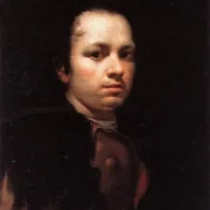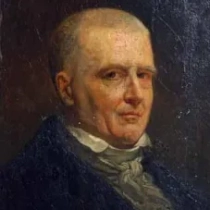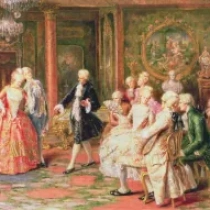 1697 - 1768
rococo
1697 - 1768
rococo
Description (Giovanni Antonio Canal) Canaletto
Giovanni Antonio Canal, better known as Canaletto, emerged as a luminary in 18th-century Venetian art, immortalizing the beauty of his city through precise and atmospheric depictions. Born in Venice on October 18, 1697, Canaletto inherited artistic inclinations from his father, Bernardo Canal, a theatrical scene painter.
Canaletto's early career saw him collaborating with his father, creating stage designs that honed his skills in capturing perspective and architectural details. His transition to landscape painting was gradual, but by the 1720s, he had become a master of the veduta, or view painting.
Unlike traditional landscape artists, Canaletto's work was meticulously detailed, capturing the essence of Venice's grandeur. His signature scenes depicted the city's iconic landmarks, from the Grand Canal to St. Mark's Square, imbuing each canvas with an architectural precision that bordered on photographic.
Canaletto's popularity soared, attracting patrons from across Europe. His paintings became sought-after souvenirs for Grand Tour travelers, fascinated by the allure of Venice. His work wasn't confined to his homeland; he spent time in England, catering to the taste of British aristocrats fascinated by Venetian culture.
Despite the acclaim, Canaletto faced criticism for his perceived rigidity in style. In response, he adapted, introducing variations in his compositions and experimenting with capricci—imaginative architectural fantasies that showcased his artistic versatility.
Financial challenges prompted Canaletto to sell his works through agents, contributing to a misconception that he mass-produced paintings. In reality, each piece bore the artist's meticulous touch, maintaining the quality that defined his oeuvre.
Canaletto's legacy endured through his influence on subsequent vedutisti and the romanticized perception of Venice in art. His death on April 19, 1768, marked the end of an era, but his contributions to the genre ensured that the splendor of Venice would forever be captured in the timeless beauty of Canaletto's vedute.
Gallery
Paintings (Giovanni Antonio Canal) Canaletto
 The River Thames with St. Paul's Cathedral on Lord Mayor's Day, detail of St. Paul's Cathedral, c.1747-48
The River Thames with St. Paul's Cathedral on Lord Mayor's Day, detail of St. Paul's Cathedral, c.1747-48
Quotes
I do not paint pictures; I only paint representations.
My intention in painting has always been to make a painting that could live up to the form of architecture.
I want to present myself as a great painter, a historical painter.
The study of perspective is the study of the visible world.
I start with a general view of the scene; then I withdraw the eye, searching for and choosing the details within the limits of the picture. I now compare the drawing with nature, and correct the faults.
F.A.Q Section
"The Grand Canal in Venice from Palazzo Flangini to Campo San Marcuola" (c. 1738): A stunning view of the Grand Canal showcasing Canaletto's precise rendering of Venetian architecture.
"Venice: The Bacino di San Marco from the Canale della Giudecca" (c. 1740–1745): Another iconic work capturing the beauty of Venice's waterfront.







No Comments Yet...